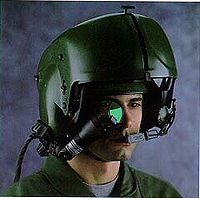
Photo from wikipedia
Eye movements show primary responses that reflect humans’ voluntary intention and conscious selection. Because visual perception is one of the fundamental sensory interactions in the brain, eye movements contain critical… Click to show full abstract
Eye movements show primary responses that reflect humans’ voluntary intention and conscious selection. Because visual perception is one of the fundamental sensory interactions in the brain, eye movements contain critical information regarding physical/psychological health, perception, intention, and preference. With the advancement of wearable device technologies, the performance of monitoring eye tracking has been significantly improved. It also has led to myriad applications for assisting and augmenting human activities. Among them, electrooculograms, measured by skin-mounted electrodes, have been widely used to track eye motions accurately. In addition, eye trackers that detect reflected optical signals offer alternative ways without using wearable sensors. This paper outlines a systematic summary of the latest research on various materials, sensors, and integrated systems for monitoring eye movements and enabling human-machine interfaces. Specifically, we summarize recent developments in soft materials, biocompatible materials, manufacturing methods, sensor functions, systems’ performances, and their applications in eye tracking. Finally, we discuss the remaining challenges and suggest research directions for future studies.
Journal Title: Biosensors
Year Published: 2022
Link to full text (if available)
Share on Social Media: Sign Up to like & get
recommendations!